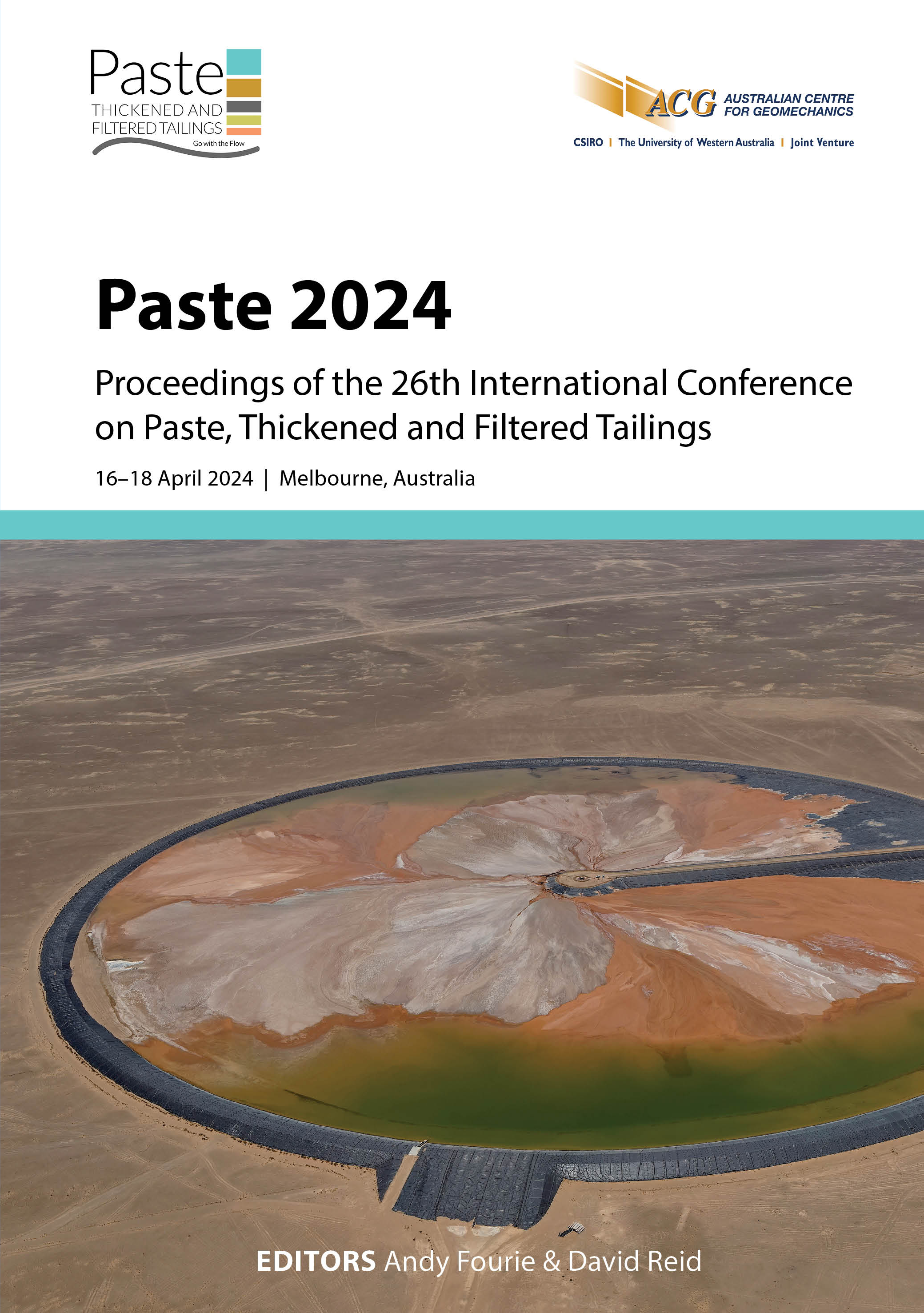Sustainable design for construction and operation of a storage area for filter press bauxite residue in a desert environment

|
Authors: Webb, D; Gassner, F |
DOI https://doi.org/10.36487/ACG_repo/2455_16
Cite As:
Webb, D & Gassner, F 2024, 'Sustainable design for construction and operation of a storage area for filter press bauxite residue in a desert environment', in AB Fourie & D Reid (eds), Paste 2024: Proceedings of the 26th International Conference on Paste, Thickened and Filtered Tailings, Australian Centre for Geomechanics, Perth, pp. 199-204, https://doi.org/10.36487/ACG_repo/2455_16
Abstract:
Bauxite residue produced via the Bayer process is of a high pH and as such is typically considered to pose a significant risk to the environment. Accordingly, storage facilities for bauxite residue are typically designed and constructed to incorporate a low permeability liner system. A concept design was developed by others based on conventional compacted clay liners and large perimeter embankments. The region did not possess the materials typically required for construction of a low permeability liner system (i.e. clay and water), so a revised design was developed which resulted in a more sustainable solution by substantially reducing construction costs, required resources and greenhouse gas emissions associated with material transport. This included reduced earthworks requirements, maximising the use of site won materials, minimising the need to import water and crushed rock, and eliminating the need to import clay. Specialist accelerated durability testing was conducted on the proposed liner materials to ensure the liner system would perform satisfactorily under the anticipated extreme exposure conditions, including a highly alkaline environment. Due to the risk of residue dusting, a laboratory-based dust suppression study was undertaken during the design stage to help understand dust suppression requirements for the facility in this hot, dry and windy environment. In addition, in an effort to reduce the risk of dust generation, the facility was designed to facilitate progressive rehabilitation, using site won materials excavated to construct the baseliner of the facility. This limits the exposed area of residue and the associated risk of dust generation..
Keywords: bauxite residue, dry stack, filter press, geosynthetics, alumina, sustainable dust suppression
References:
Athanassopoulous, C & Vamos, RJ 2012, Carbon Footprint Comparison of GCL’s and Compacted Clay Liners, CETCO, Archerfield.
Gassner, FW, Benson, CH, Wang, X & Foo, D 2008, ‘Hydraulic conductivity of two geosynthetic clay liners permeated with an aluminium residue leachate’, GeoAmericas 2008, Cancun.
Du Preez, L, Gassner, FW & Bosworth, L 2014, ‘Suitability of GCL in contact with bayer liquor’, Proceedings of the 10th International Geosynthetics Conference, Berlin.
Gassner, F & Scheirs, J 2010, ‘Durability of geosynthetic liners in high pH environment’, Proceedings of the 9th International Geosynthetics Conference, Guaruja.
Giroud, JP & Wallace, RP 2016, ‘Quantified impact of geomembrane wrinkles on leakage through composite liners’, GeoAmericas 2016, Proceedings of the Third PanAmerican Conference on Geosynthetics, Miami Beach.
Koerner, RM, Koerner JR & Koerner GR 2019, GSI White Paper #41, Relative Sustainability (i.e., Embodied Carbon) Calculations with Respect to Applications Using Traditional Materials Versus Geosynthetics, Geosynthetic Institute, Folsom.
Standards Australia 2003, Measures of Testing Soils for Engineering Purposes Method 5.1.1: Soil Compaction and Density Tests – Determination of the Dry Density/Moisture Content Relation of a Soil Using Standard Compactive Effort (AS 1289.5.1.1-2003).
Webb, D 2022, ‘Design of liner system for bauxite residue storage system in desert environment’, GEOANZ #1 Conference, Leischmann Associates, Hobart.
© Copyright 2024, Australian Centre for Geomechanics (ACG), The University of Western Australia. All rights reserved.
View copyright/legal information
Please direct any queries or error reports to repository-acg@uwa.edu.au
View copyright/legal information
Please direct any queries or error reports to repository-acg@uwa.edu.au
